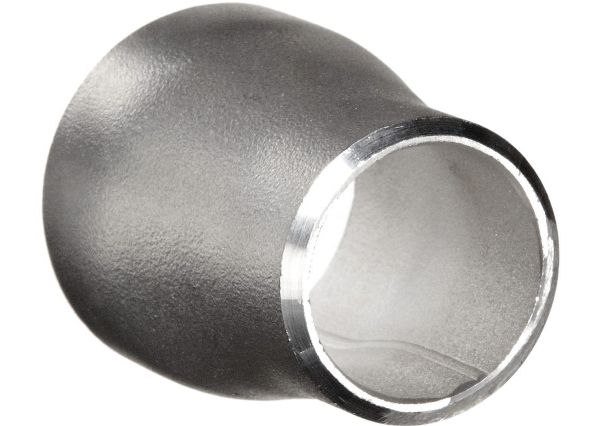Stainless steel pipe reducers, also known as stainless steel pipe reducers, are important pipe fittings for connecting two stainless steel pipes of different diameters. Its main function is to ensure a smooth transition of fluid from a larger diameter to a smaller one in the pipeline system, avoiding sudden changes in flow rate that could cause vortices, pressure losses or noise problems. It is widely used in industries such as petroleum, chemical engineering, power, pharmaceuticals, food, and environmental protection.
According to the structural form, it can be divided into:
Concentric
reducer
The center lines are consistent and conical.
The fluid transition is uniform and suitable for vertical installation.
It is often used in systems where gas or liquid fluids do not need to be vented or condensed.

Eccentric reducer pipe
The bottom or top of the two pipe openings are aligned, and the centerline is offset.
One side is straight and the other side is inclined, suitable for horizontal pipes.
It can prevent liquid from accumulating at the bottom of the pipe or gas from gathering at the top of the pipe.
Classified by manufacturing process:
Seamless reducing pipe: Formed by drawing or hot pressing seamless steel pipes, it is suitable for small-diameter and high-pressure applications.
Welded reducer: Made by rolling and welding steel plates, it is suitable for large-diameter and low-pressure systems.
Common materials:
304/1.4301: General-purpose stainless steel, suitable for most non-strongly corrosive environments.
304L / 1.4307: Low carbon, suitable for applications without heat treatment after welding, resistant to intergranular corrosion.
316/1.4401: Contains molybdenum, enhances resistance to chloride ion corrosion, and is suitable for seawater and chemical industries.
316L / 1.4404: Low-carbon 316, with stronger corrosion resistance and weldability.
310S / 1.4845: High-temperature alloy, suitable for high-temperature working conditions.
2205 duplex steel: High strength, resistant to stress corrosion, suitable for the chemical and Marine fields.
Manufacturing process:
Hot press forming (hot push)
The raw materials are pressed by high-temperature molds and are suitable for medium and large-diameter reducers.
Cold drawing/cold pressing
It is formed at room temperature and is suitable for applications with small diameters and high precision requirements.
Welding and rolling
It is formed by rolling steel plates and welding them, and is used for large-sized, non-standard customized products.
Machining finishing
Including turning, polishing, pickling and passivation, to improve dimensional accuracy and surface quality.
Typical specification
Diameter range: From DN15×10 to DN1200×800, or customized according to customer requirements.
Wall thickness grades: According to standards such as SCH5S, 10S, 40S, 80S, 160, etc., or customized thicknesses.
Length and offset: The concentric type is axially symmetrical, while the offset size of the eccentric type needs to be clearly defined.
Application field
Petrochemical industry: Pipeline transition, pump inlet/outlet, to prevent fluid impact and cavitation.
Food and medicine: The surface of the sanitary grade reducer pipe needs to be mirror-polished to meet GMP requirements.
Power industry: Flow regulation in cooling water systems and boiler pipe networks.
Water treatment: Control flow rate and pressure in drainage and filtration systems.
Seawater desalination: A conveying system with high corrosion resistance requirements, suitable for connection with equipment of different diameters.
Summary
Although stainless steel pipe reducers are just a connecting component in pipelines, they are indispensable important elements in pipeline design. Its role is not only dimensional transition, but also related to the fluid mechanical performance, structural safety and operational stability of the system. Only reasonable selection, precise manufacturing and appropriate material choice can ensure the efficient, safe and long-term operation of the entire system.
